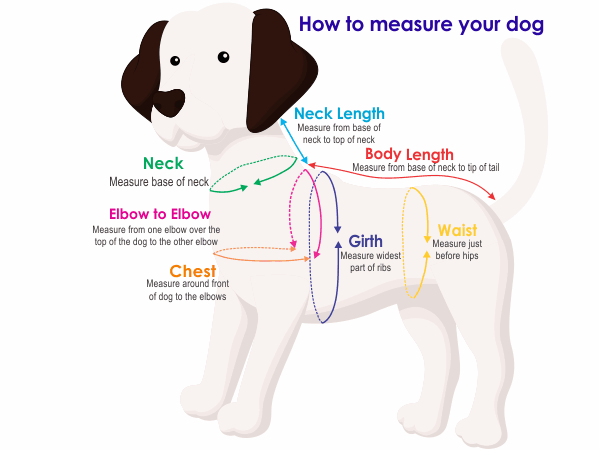When it comes to choosing the right dog collar, getting the size right is just as important as selecting the design, color, or material. A properly fitted collar is not only a fashion statement but a vital pet accessory that ensures safety, comfort, and control. An ill-fitting collar can cause discomfort, skin irritation, or even escape risks.
This comprehensive guide will walk you through the process of measuring your dog’s neck accurately so you can select the perfect collar every time.
Why Collar Fit Matters
Before diving into the how-to, it’s important to understand why correct sizing is critical for both you and your dog:
Comfort
A collar that’s too tight can cause chafing or restrict breathing, while a loose one may slide around uncomfortably or snag on objects.
Safety
Poorly fitted collars can lead to:
- Choking or injury
- Escape from the collar
- Skin abrasions or matting, especially in long-haired breeds
Control
For training, walks, or identification, your dog’s collar must sit snugly on their neck without shifting too much.
Tools You’ll Need
Measuring your dog’s neck is easy—you only need a few simple tools:
- Soft measuring tape (flexible tailor’s tape)
- Your dog (calm and standing)
- Notebook or phone to record measurements
- Treats (optional—but highly recommended!)
If you don’t have a measuring tape, you can use a piece of string and a ruler.
Step-by-Step: How to Measure Your Dog’s Neck
Step 1: Calm Your Dog
Have your dog stand or sit in a relaxed position. If your dog gets fidgety, offer treats or ask someone to help gently hold them still.
Step 2: Find the Right Spot
The collar should sit midway down the neck, not too close to the ears or too low near the shoulders. For most dogs, this is the widest part of the neck.
Step 3: Use the Measuring Tape
Wrap the soft measuring tape around your dog’s neck at the chosen location. It should be snug but not tight—you should be able to fit two fingers between the tape and your dog’s neck.
The “Two-Finger Rule” is the gold standard: snug enough to prevent slipping, but loose enough to prevent choking.
Step 4: Record the Measurement
Note the measurement in inches or centimeters—whichever the collar manufacturer uses. For example, if the tape reads 14 inches with two fingers’ space, then 14” is your dog’s neck size.
Consider Collar Adjustability
Most collars are adjustable within a range. If your dog’s neck is on the edge of a size (e.g., 14”), choose a collar where 14” is near the middle of the range for the most flexibility and comfort.
Measuring for Puppies
If you’re buying a collar for a puppy, remember that they grow fast! Choose an adjustable collar with enough room for growth, and measure again every couple of weeks.
You may go through several collars in the first year, especially for large breeds.
Specialty Collar Considerations
Not all collars are the same—some pet accessories require slightly different measurements or adjustments.
Martingale Collars
- Used for training and dogs that slip out of regular collars.
- Measure the neck like normal but also check the manufacturer’s guide for how the tightening section fits.
Flat Collars
- Ideal for ID tags and everyday use.
- Follow the standard measuring method.
Head Collars
- Fit differently; these loop around the muzzle and behind the ears.
- Use both neck and snout measurements—check product-specific guides.
Breakaway Collars
- Designed for cats or small dogs who could get stuck.
- Fit like flat collars but must have proper snugness to prevent accidental release.
Common Mistakes to Avoid
- Guessing the Size
- Every breed and dog is different—even within the same breed. Always measure first.
- Using a Rigid Ruler
- A hard ruler won’t give an accurate wraparound fit. Use a flexible tape.
- Ignoring Fur Thickness
- Long-haired dogs might need slightly larger collars to avoid matting.
- Not Rechecking Size
- Dogs gain or lose weight. Check sizing every few months.
Extra Tips for Collar Comfort and Safety
- Inspect regularly: Look for wear, fraying, or broken buckles.
- Take breaks: Give your dog time without a collar, especially indoors.
- Choose quality materials: Nylon, leather, or neoprene are durable and gentle.
- Include ID tags: Every collar should have your contact information attached.
- Avoid heavy collars: Don’t burden small breeds with oversized hardware or thick collars.


